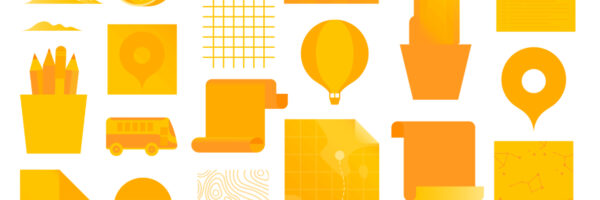Everything you learned in school and forgot – all in one printable
Consider the wisdom you might share with your 16-year-old self: there are other fish and a much larger sea, that outfit is not all that, and you will actually use what you’re learning in school out in the real world.
If your index cards on PEMDAS and affect vs. effect are buried in a box in your parents’ home, we have you covered with a handy cheat sheet going over all the basic math, extra credit art, and long-forgotten grammar tips and tricks you learned in school that literally might come up in your next meeting.
Math
For some, no math counts as “basic,” sweat forming on our brow the second the bill comes at the offsite or we’re shared on a spreadsheet. You may not be a mathlete in time for tryouts, but the following lesson will solve at least some of your math problems.
Solving problems (in the right order)
Speaking of problems, what is Aunt Sally’s exactly? She’s actually quite helpful as the star of the elementary school mnemonic device (bonus lesson: that’s an acronym to help you remember something) for the steps you take to solve an equation:
PEMDAS: Please Excuse My Dear Aunt Sally
Parentheses: () Start here
Exponents: Xx Multiply these numbers by themselves
Multiplication and Division: Then, multiply or divide
Addition and Subtraction: Finally, add or subtract
Remember PEMDAS when writing formulas in Excel or Sheets – especially handy if you’re trying to figure out what broke and where.
Finding the average
Three common ways to find an average are through mean, median, and mode–words you may recall, applications of when and why, you may not. Here’s a breakdown of each:
Mean: Your most “average average,” this divides the sum of all numbers by the total number of numbers.
Median: This is the middle number of a set plotted out in numerical order. Median will help you understand not just an average, but what falls above and below it when looking at all of your data.
Mean and median can be used together to give you more context on distribution and how much influence outliers have on your average.
Mode: This is the number that appears most in the set. You might use it to easily identify the most popular choice.
Visualizing data
As you prep for a Big Presentation, how you communicate the numbers in your deck is just as much data as it is design.
Use pie charts to compare a group of numbers as they contribute to the whole, and go for bar graphs to compare different groups to each other.
So, to show what percentage of your entire week is taken up by each task on your to-do list, use a pie chart. Compare your time spent on one task every month over the course of a year in a bar graph.
When stuck, get literal; if all of your data could be represented together like differently sized slices of pizza, you know what to do.
Determining probability (determining likelihood)
While your Work Life Tarot deck can help you consider and reflect on the many paths before you, this handy equation will determine the likelihood of them happening:
Take the number of ways something can happen
Then, divide it by the total number of outcomes
Calculating a 20% tip
We’ve all been there – tasked with figuring out the tip, seven sets of eyes on you waiting for the grand total, Venmos ready.
Next time you’re handed a bill without gratuity included, conjure elementary arithmetic. Take the total, calculate 10% by moving the decimal point one to the left. Now, double it.
Ex: Bill is $460, 10% is $46. Doubled, that’s $92.
To make it even easier, round up and estimate. Let’s say the bill is $237. Round up to $240. 10% is $24. $24 x 2 is $48–and you’re a good tipper!
Geometry IRL: 360 vs 180
To make these geometric references grammatically-correct, consider the shape referenced. With 360 degrees in a circle, if someone does a full 180, it means they’re now facing the opposite direction, likely to describe a change in opinion or action.
A 360 is the full rotation, which is why it might be what you call your performance review covering a well-rounded assessment of your work.
Spelling & Grammar
Ping me on Slack. Per my last email. “I’m excited to share that I’ve started a new role…”
Comms has become a part of all of our jobs, making simple spelling and grammar crucial for impact and effect… or is it affect? To answer these questions and more, I went to the SME herself: Work Life’s Managing Editor, Lauren Marten Parker. Consider her top spelling and grammar tips necessary for the workplace:
Top 5 grammar rules
- Make subjects and verbs agree. Singular subjects should have verbs ending in “s,” and plural subjects are paired with verbs with no “s.” He eats and they eat.
- Avoid run-ons by splitting up longer thoughts into multiple sentences using punctuation or conjunctions.
- Double check your homophones, AKA the words that sound alike but carry different meanings: its vs it’s, your vs you’re, there vs their vs they’re, who’s vs whose.
- Don’t misplace your modifiers. Keep words that describe other words together to avoid confusion.
- Avoid passive voice to keep the focus on the action. ”They booked the conference room” centers the team that booked, while the clunkier “The conference room was booked by them,” centers the room.
Commonly misused words
- Literally: If you’re looking for a word that means “word for word” or “exactly,” this is it. Otherwise, skip.
- Affect vs effect: Words can affect (verb, the action) your message. The right ones can have a positive effect (noun, the result).
- Comprise vs compose: Your team is comprised of (made up of) 12 engineers. 12 engineers compose (make up) your team.
- Should of: You really should have put it <– like this.
- All the sudden: Ah, all of a sudden, it all makes sense.
Essential punctuation
Period (.) Place at the end of sentences to bring them to a full stop.
Comma (,) Use to separate words or ideas, avoid run-ons, or pause for a breath.
Colon (:) Set up words, ideas, even a quote or list.
Semi-colon (;) Connect two clauses in place of a period or conjunction.
Ellipsis (…) Sub in for omitted words, to trail off, or to add a little intrigue.
Science
The scientific method
Inform your hunches and turn them into data-backed answers with this tried-and-true process that may have even more use for A/B testing, user research, or your next team retrospective than it did for your 5th grade science fair project.
Start with an Observation, maybe a problem or something you can identify as not working.
Ask a Question.
Do Research to color that question.
Form a Hypothesis based on what you’ve learned so far.
Test that and other ideas until you have…
…Results, which you can compare against your hypothesis.
Come to a Conclusion, a good one based on the scientific method you just followed.
Art
The color wheel and color theory
Color theory isn’t just helpful for putting together a power outfit for your next presentation. It can be your roadmap to make sure the deck you’re walking the audience through looks good, too.
Take the color wheel for a spin to learn which hues complement each other–those directly across. You’ll gain a whole new respect for your brand palette and never mix in random shades again.
Psychology
Even the Spark Notes to an Intro to Psych class can be like an instruction manual for the people in your life. Start with the most common cognitive biases to better understand what can influence your customers’ purchasing decisions or drive your team’s decision-making:
Confirmation bias: Trusting information that confirms what you already think
Availability bias: Learning about something once, then seeing it everywhere
Anchoring bias: Comparing all decisions to the first known option
Planning fallacy: Underestimating how long tasks will take to complete
Modal bias: Assuming our own idea is the best
Economics
Missing this quarter’s sales goals? Go back to basics to plot your products or services in the bigger economic picture of what could be affecting pricing, consumers, and their greater needs, starting with these concepts:
Supply and demand: The relationship between availability and desire can help you determine pricing and even new product offerings.
Microeconomics vs macroeconomics: To make audience personas as prescient as possible, identify individual behaviors of the people, businesses, or markets you serve (micro) within their regional, national, or global economic realities (macros).
Inflation: A continued increase in the average price of goods that reduces currency’s value, which can affect the cost of goods and public perception of it.










































